Fun times at Wild Friends

A good diet and a safe place to sleep form the foundation for keeping animals healthy and well. But it’s important also to stimulate their minds and keep them active if you really want to see them happy and thriving. Platforms to climb on, toys to chase and puzzling food containers don’t just benefit the cats, dogs and other common pets at Best Friends Animal Sanctuary. They also do a world of good for the animals at Wild Friends, Best Friends’ state and federally licensed wildlife rehabilitation center.
Enrichment is the key ― whether it’s a wild animal here temporarily for rehabilitation, a nonreleasable education animal or an adoptable animal who doesn’t quite fit in. Here’s how it’s done, the Wild Friends way. Get ready for a whole lot of fun.
Tasty treats
Speaking of a healthy diet, food is always a great way to provide that little extra initiative to get our furry and feathery friends thinking. Meals at Wild Friends are often separated and tucked into different areas to simulate foraging behavior. But things can get even more creative than that.
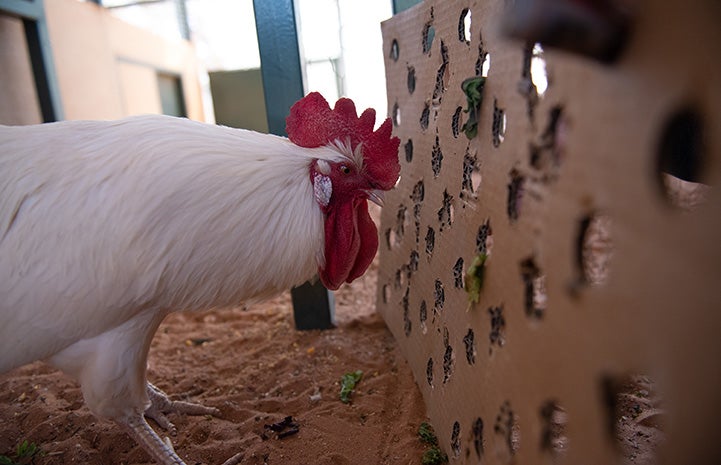
For the adoptable roosters calling Wild Friends their home-between-homes, a piece of cardboard with holes in it provides an excellent little food puzzle. With tasty treats folded up in newspaper and stuck in the holes or just hidden underneath it, roosters like Timothy have a lot of fun scratching around, searching for their snacks.
“A very natural thing for a chicken to do is just forage and scratch,” explains caregiver Brianna Vlach. “And that means that things are hidden from him, so he has to figure out what’s underneath it. He’s just really excited to scratch it.”
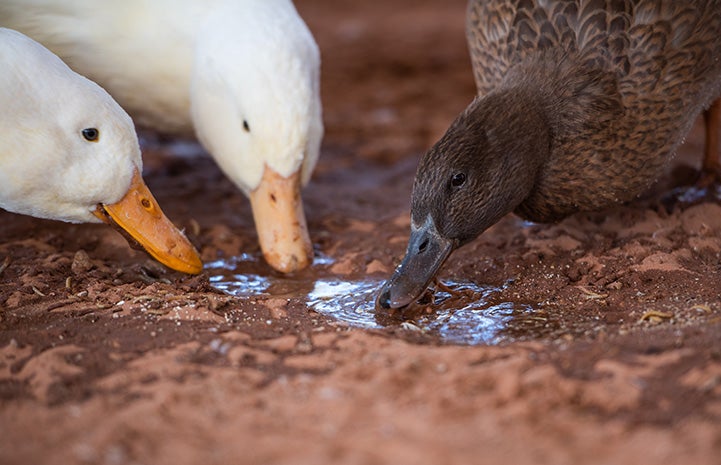
The ducks aren’t afraid to get a little dirty for their treats. In fact, they prefer to have their favorite snacks hidden in a puddle of mud so they can pick them out with their bills. And afterwards, they can just hop in their pond to clean off.
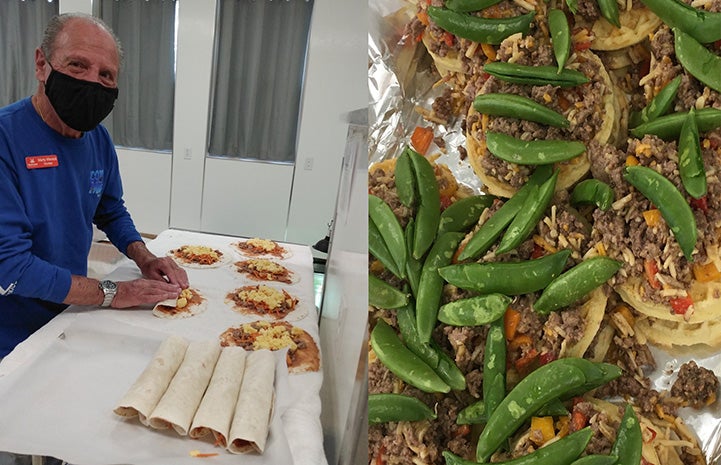
Among the very special treats that animals enjoy at Wild Friends are custom-made tacos and burritos. They even look good enough to make the staff hungry. The tortillas may go uneaten, but the act of digging through them to get to the yummy stuff inside is excitement enough for the animals. (And for the less tortilla-tearing-inclined, a nice easy salad on top is still very cute.)
Perches and hiding spots
A lot of birds ― owls, crows and gulls who can’t fly anymore due to injury and can’t be rehabilitated for release ― end up as Wild Friends education animals. These birds also get a comfortable and interesting place to live for the rest of their lives, something that’s especially important.
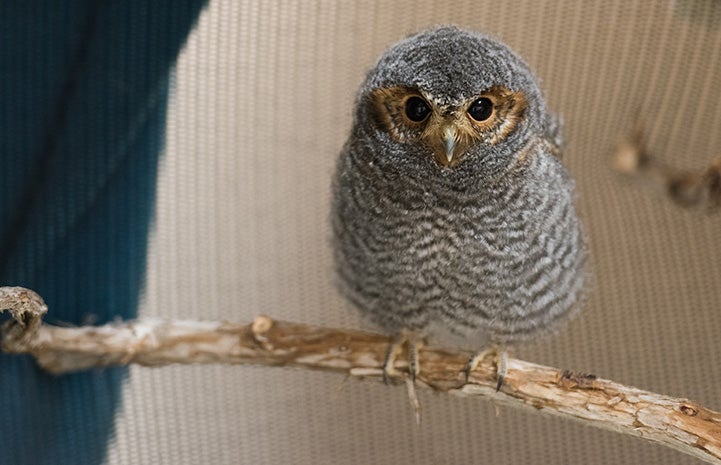
Since they can’t fly, having extra branches and perches throughout their enclosures isn’t just for fun. It’s for getting from one place to another. Whether they want to go hide in a comfy corner or they’re looking for a way down to the ground for dropped food, they have plenty of options. They like to climb up as high as possible to watch the world from up above. They’re still birds, after all.
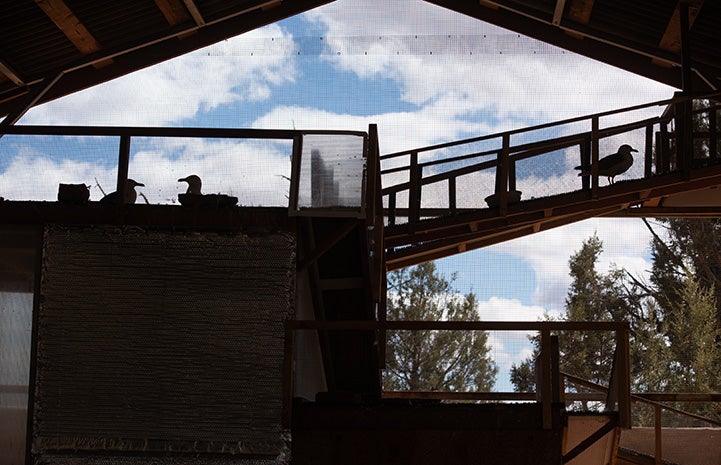
Since they’re not exactly built for roosting in trees, the California gulls have a variation on the more branch-like perches utilized by other birds. An entire little castle has been built for them, complete with ramps and platforms where they can hang out. And they spend all day climbing up and down, from their pond to the large platform on top, calling out to one another as they go.
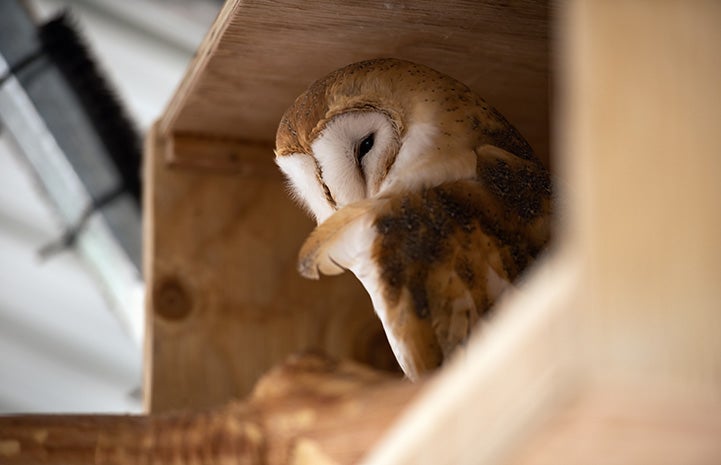
Shy barn owl Suvali has a specially made nesting box in addition to her branches and perches. Since she prefers to hide, it gives her a safe place to get out of sight when she needs it. Plus, climbing on top of it gives her an extra height advantage to survey her home.
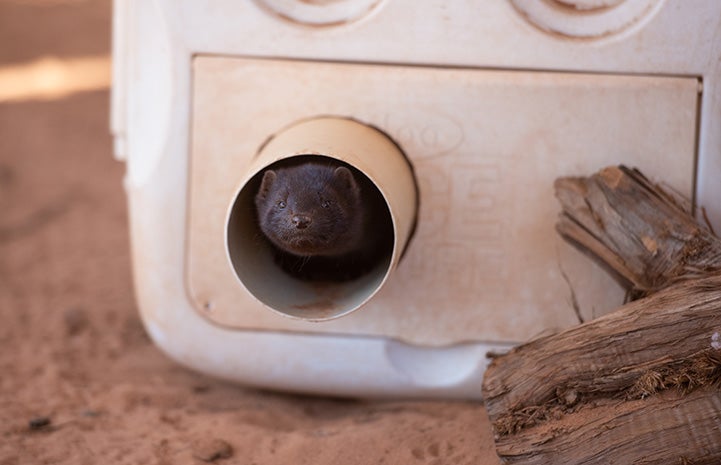
Little One, a Siberian mink, has lots of places to hide and explore in her home, and she loves darting between all of them. From a long tube that goes all throughout her enclosure to her own dark nest box, she’s got plenty of options and is definitely not going to be bored any time soon.
Individual attention for educational wildlife
For cats, dogs and other pets at the Sanctuary, playing with people is always at the top of the enrichment list. Going for walks, playing with toys or just snuggling up in someone’s lap for some scratches: It’s all good for them. And while those are options for the adoptable animals of Wild Friends, it’s a little trickier with the educational wildlife.
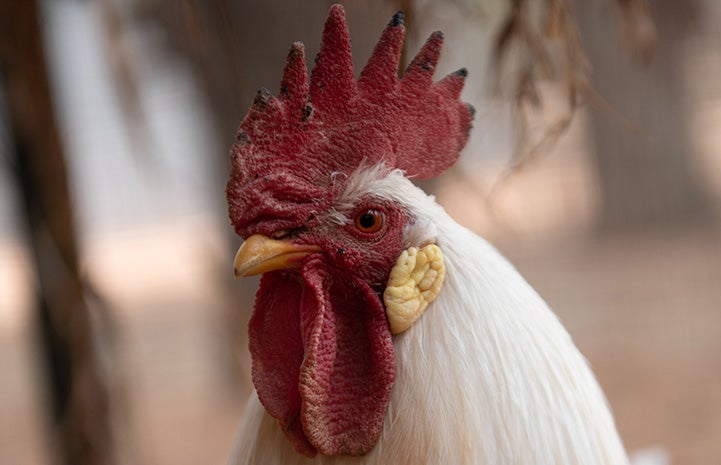
Reginald the rooster is not very comfortable around people, but his human friends are helping him with that. Lauren Ross, another Wild Friends caregiver, feeds him treats through the fence to help him build up the confidence he needs. He’s started looking forward to people visiting instead of getting defensive, and he even follows them around on the other side of the fence looking for treats.
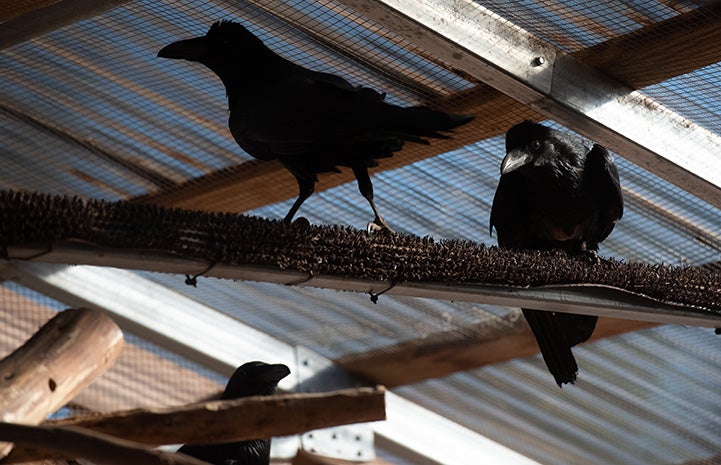
Ravens (and other corvids like crows and magpies) are super smart and very curious. Wasabi, Coffee and Novel, like the other educational birds at Wild Friends, can’t fly because of old injuries. They are shy, but still like to call back and forth to staff and visitors from the safety of their perches. They enjoy mimicking sounds they hear, and when they find one they really like, they hold onto it.
Brianna is also working with Wasabi on going to one particular spot for tours. She started by leaving treats and walking away, but almost a year later she has the timid raven comfortable enough to come down while she’s still nearby, outside the fence. “Most of the time when you get education birds, they’ve been raised with people, like hand-raised as babies,” Brianna says. “These guys were not, so the fact that she’s willing to work with us at all is unreal. It’s a slow process but it’s very worth it.”
Calling up new smells
A lot of the enrichment methods used at Wild Friends work for all or at least most of the animals. But, of course, some have different needs and so their caregivers try to find other fun options for them.
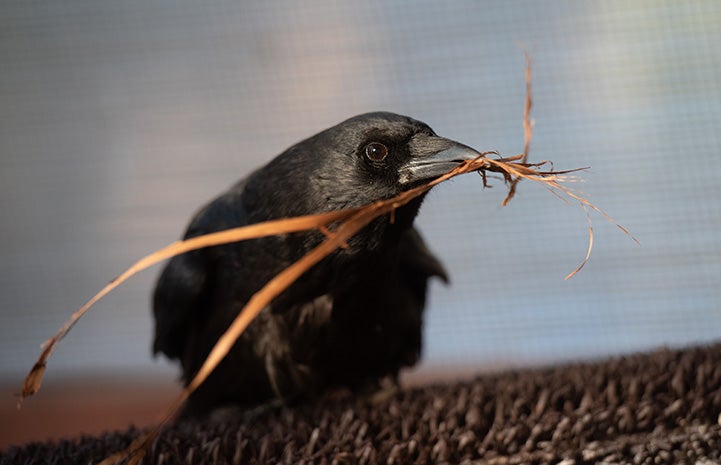
When it comes to the crows and ravens, those who can be released are always set free once they’re healed from injury at Wild Friends. But Wren Blossfeld, Wild Friends licensed wildlife rehabilitator, says corvids in captivity must be very enriched or at least be comfortable with a new thing; otherwise, they will start feather-plucking. “So, you have to be very careful,” she says.
Right now, in addition to perches, food puzzles and everything else, the ravens are having a grand time taking apart phonebooks and covering up their space with torn paper. It’s lots of fun for them and just a little extra cleanup for their human friends.
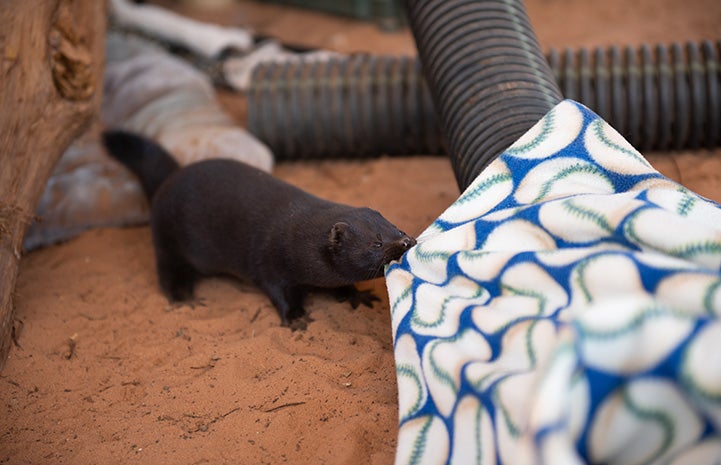
One of Wild Friends’ few carnivorous mammals, Little One (the mink) likes smells ― a lot. And one of her favorite things is when she gets a hand-me-down towel or blanket that another animal at Wild Friends has used, and she gets to roll all over in it and enjoy the new scent. It’s hours of fun from something that would have otherwise gone straight in the washing machine. And with so many other animals around, there are lots of options.
Sometimes the cats and dogs at Best Friends also get to enjoy this kind of scent enrichment. Little One’s old blankets have caused many a nose to twitch curiously in other parts of the Sanctuary. So, she’s paying it forward in her own way.
The ideas never stop. Wild Friends caregivers and volunteers are always looking for new ways to keep the animals in their care happy.
Brianna says a lot of ideas for enrichment come from volunteers and other staff members. “You just put a bunch of materials in front of them and say make a toy for (a rooster, a raven, anything) … I mean people are so creative and they don’t give themselves enough credit. We get some of our best toys like that.”
So, if you’ve got an idea for a fun activity for an animal at Wild Friends, don’t be shy. We’re always looking for new ideas.
Enrich the lives of animals near you
Whether it’s throwing a treat or designing a toy, there’s always something you can do to help enrich the lives of animals.
Read more:
Wildlife rehabilitation at Best Friends Animal Sanctuary
Meet the owls, rabbits, ravens and other wildlife at Best Friends
Injured roadrunner gets back on his feet at Best Friends
Photos by Molly Wald and Kurt Budde